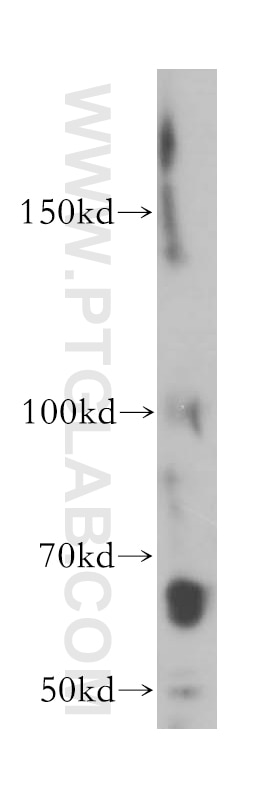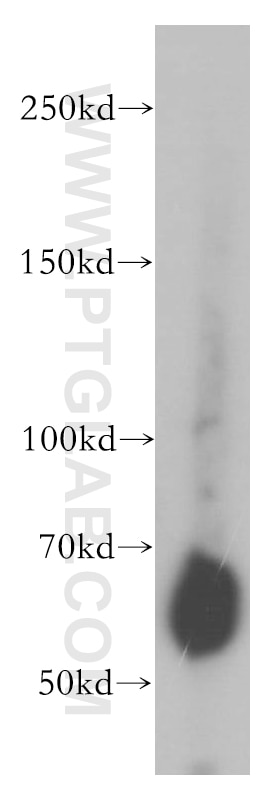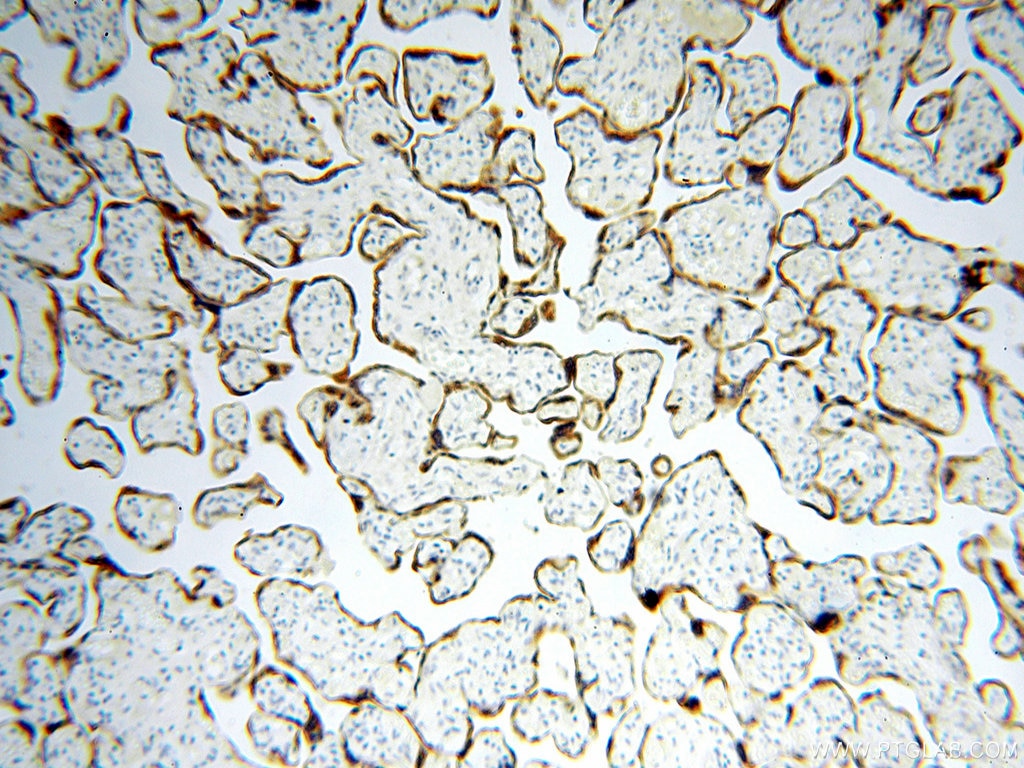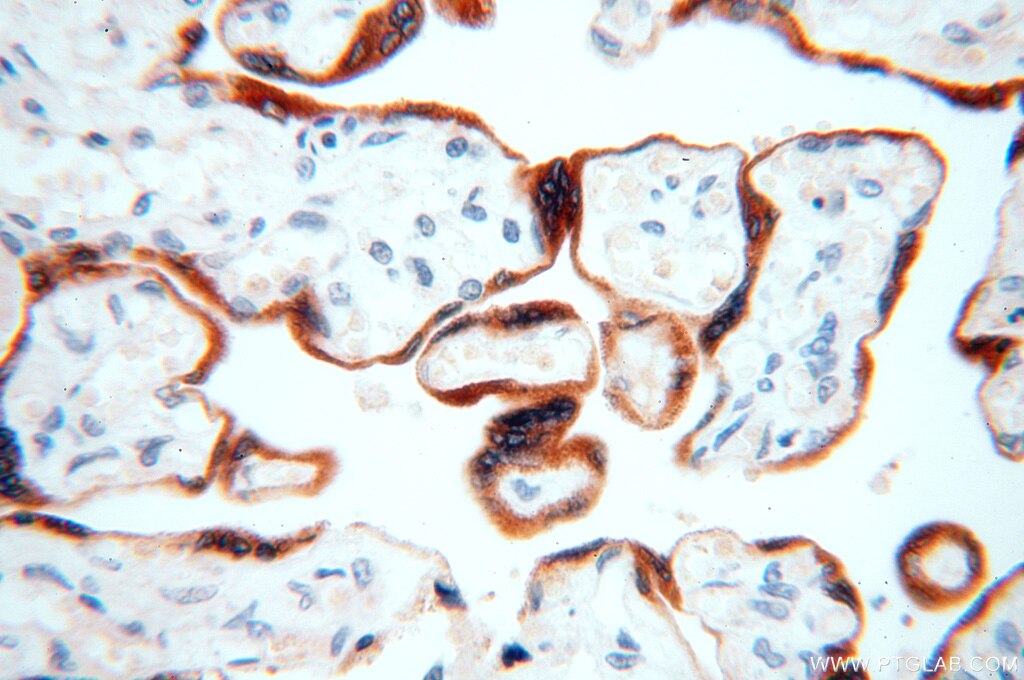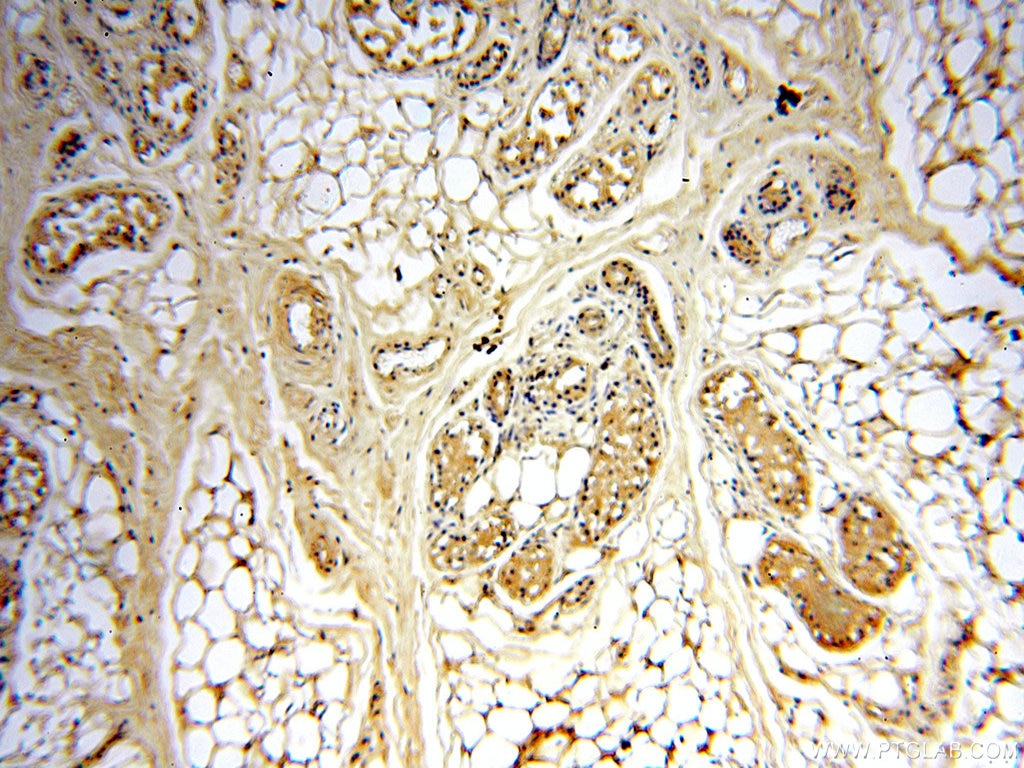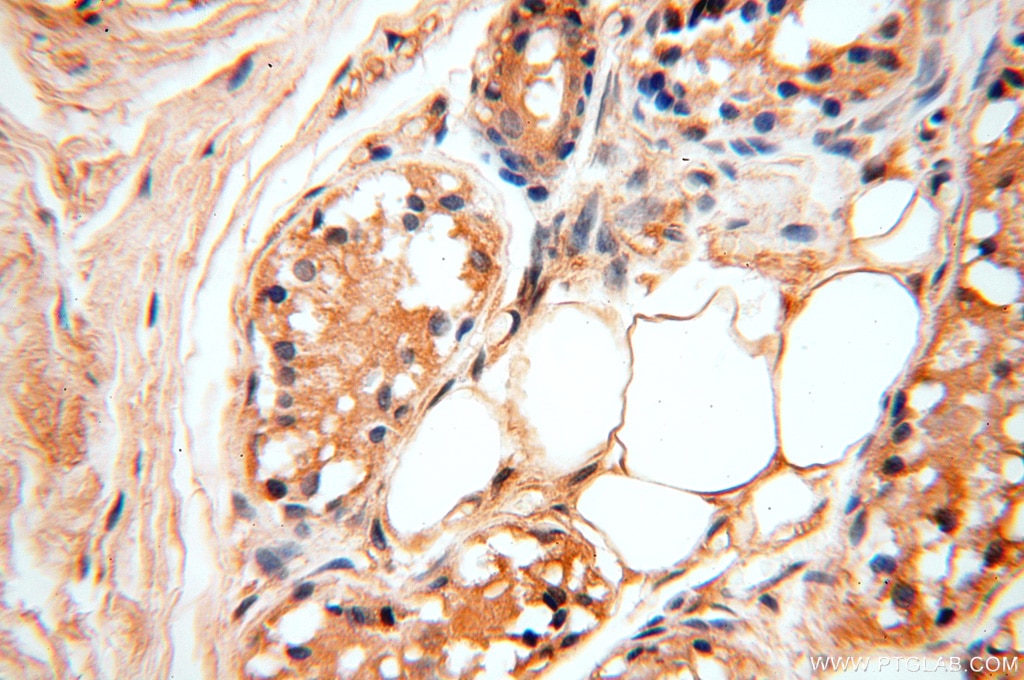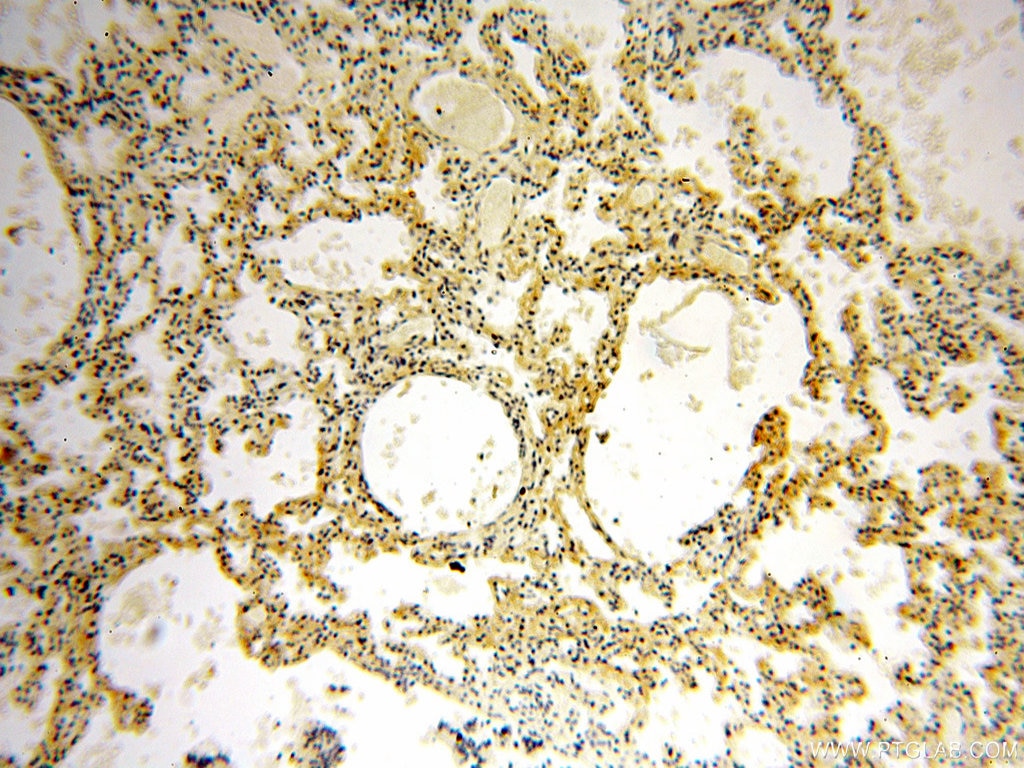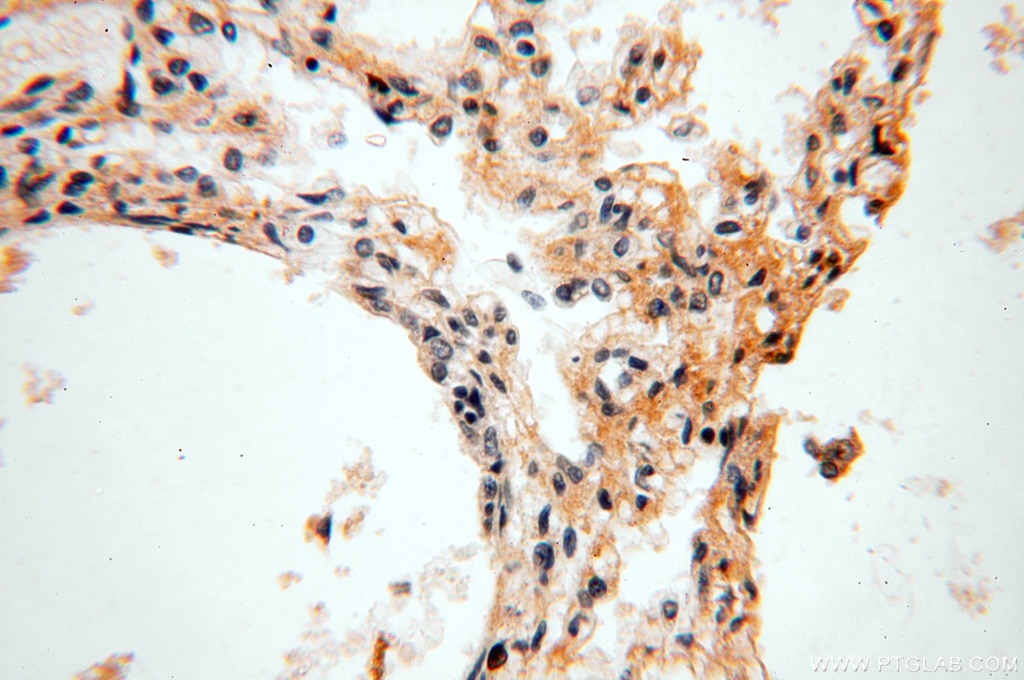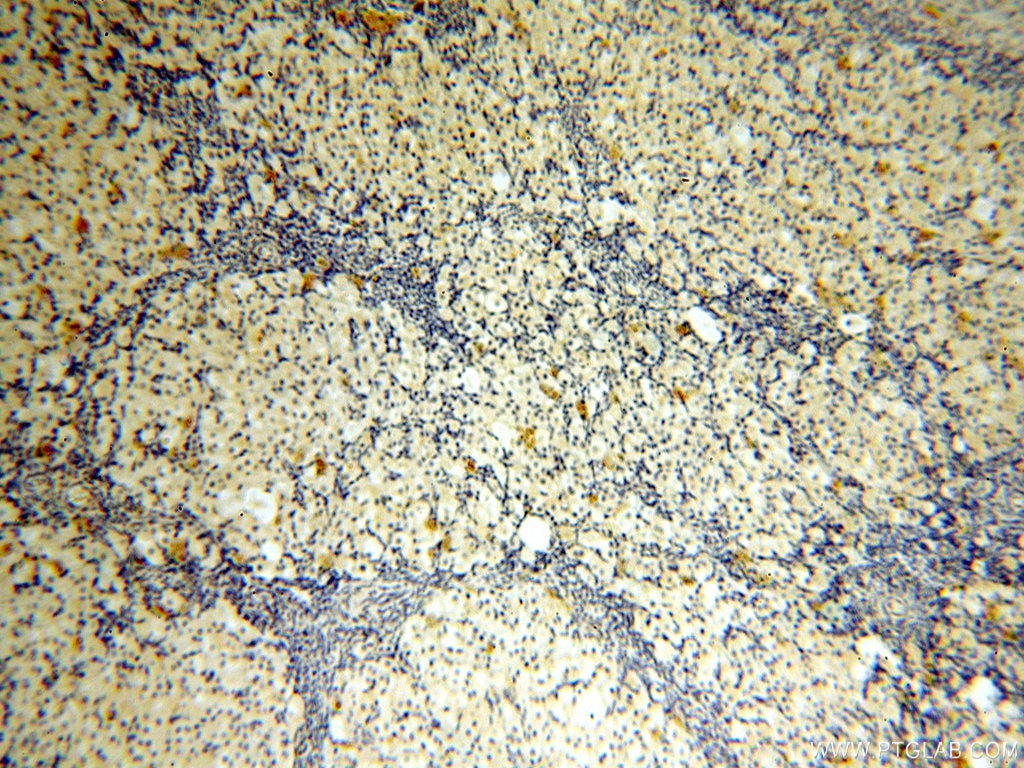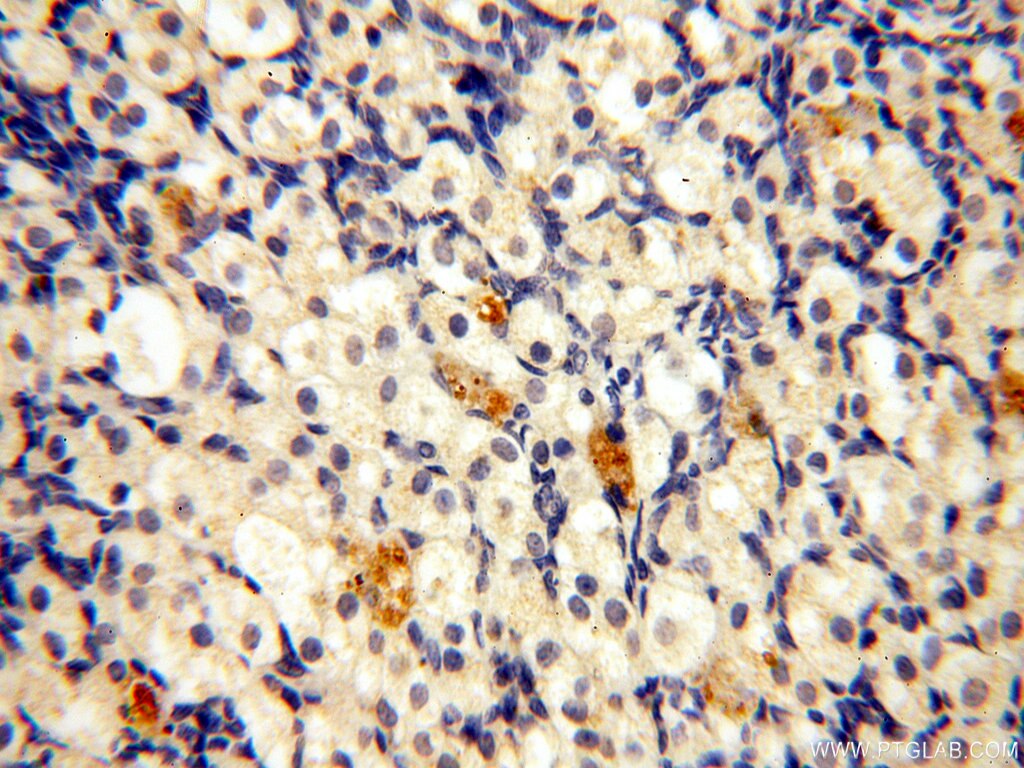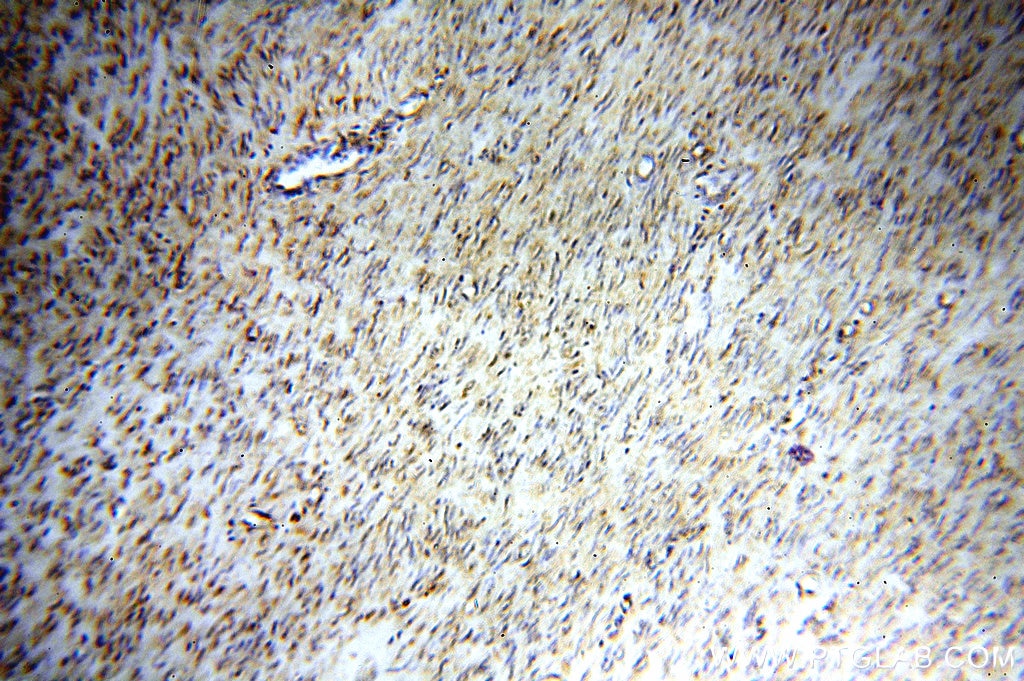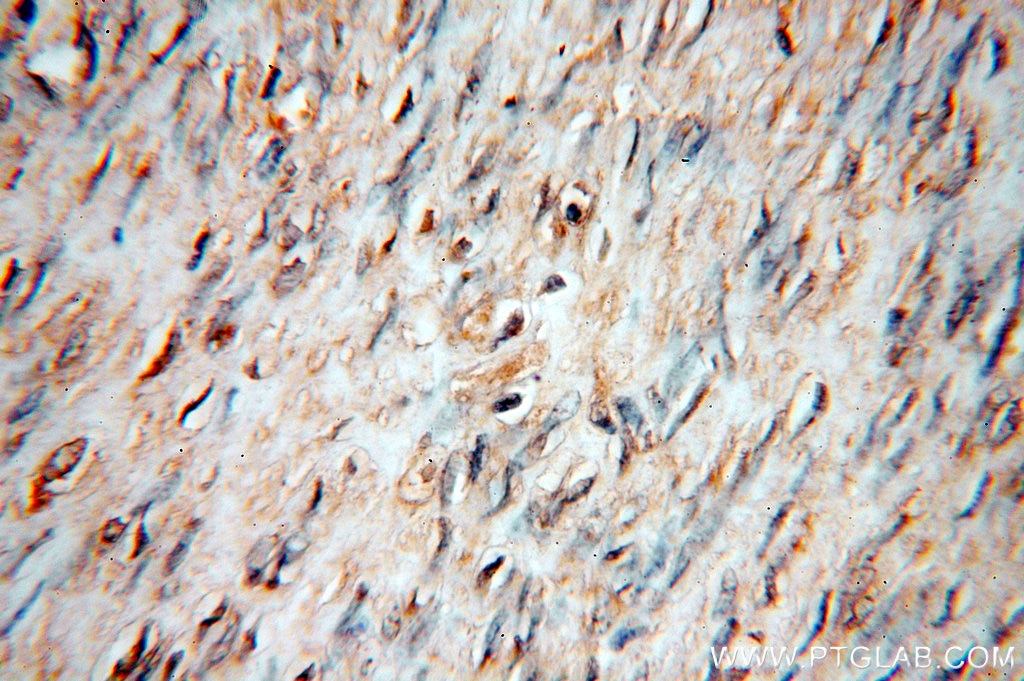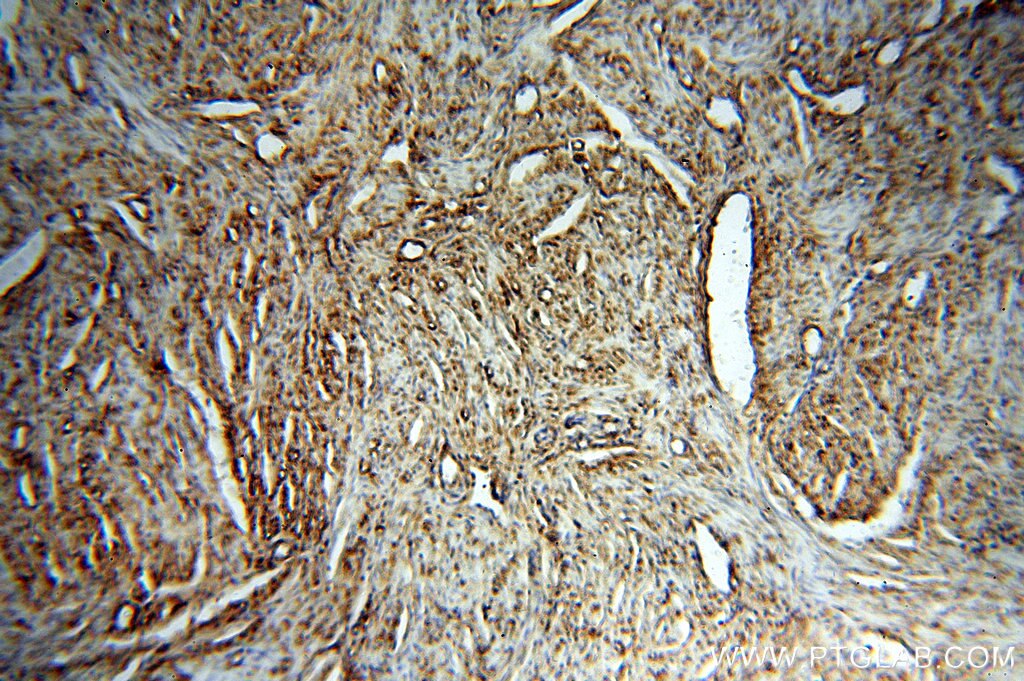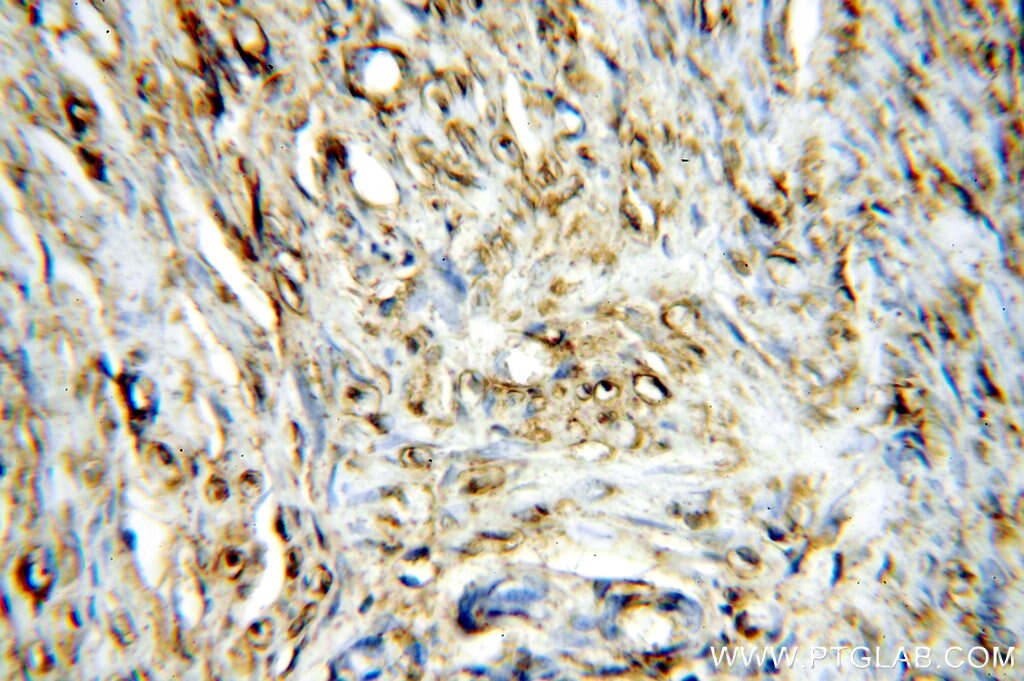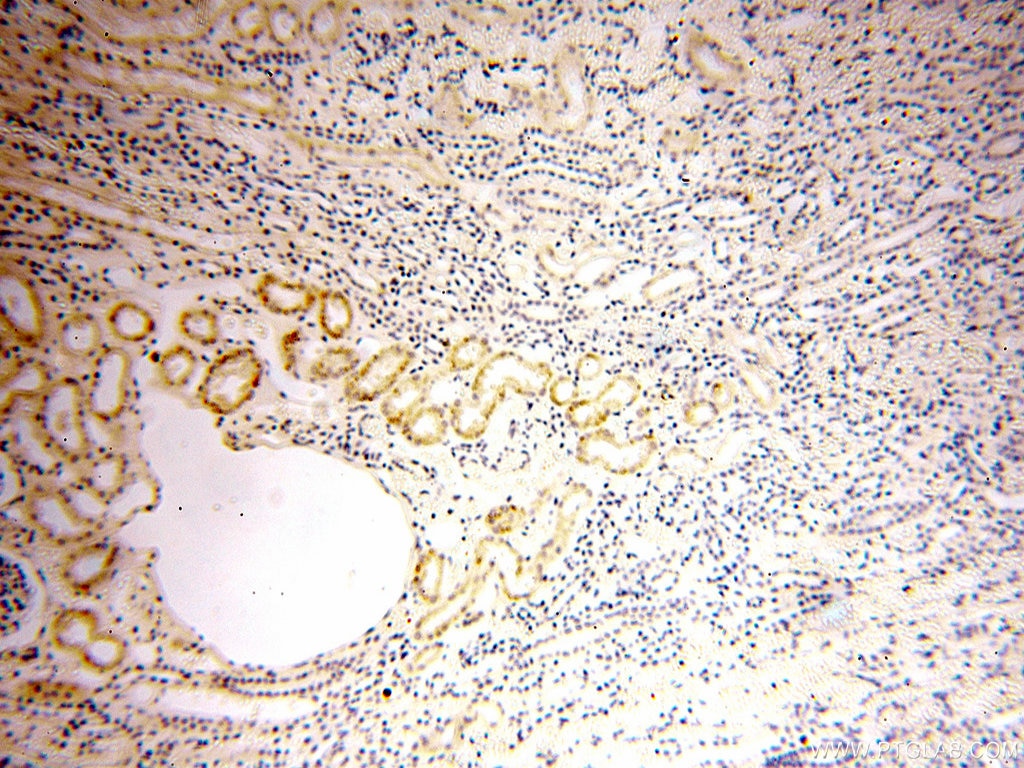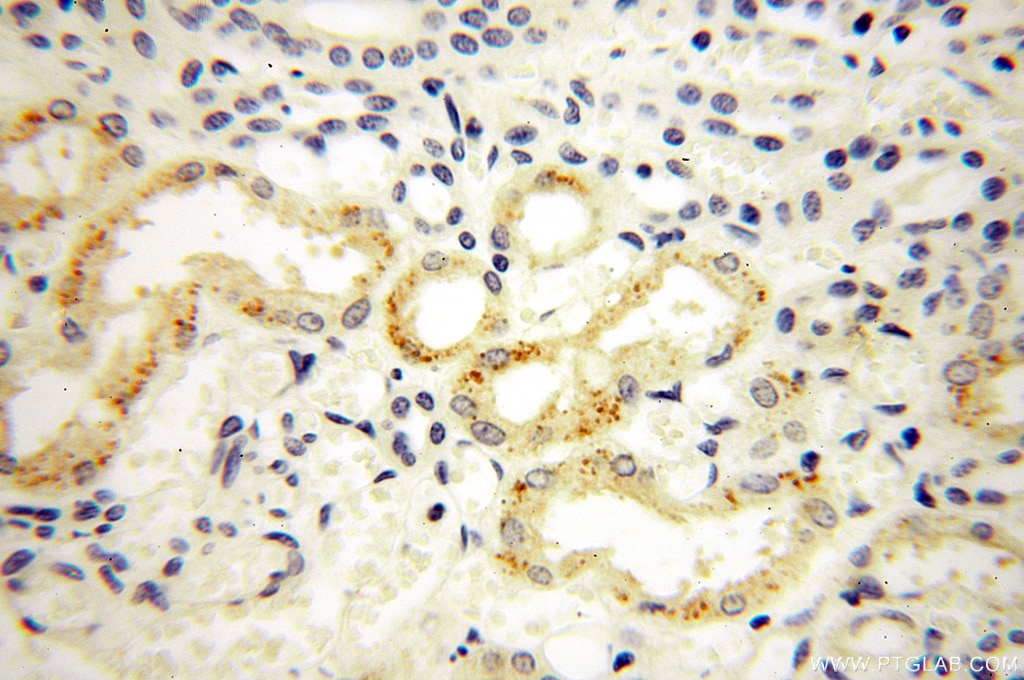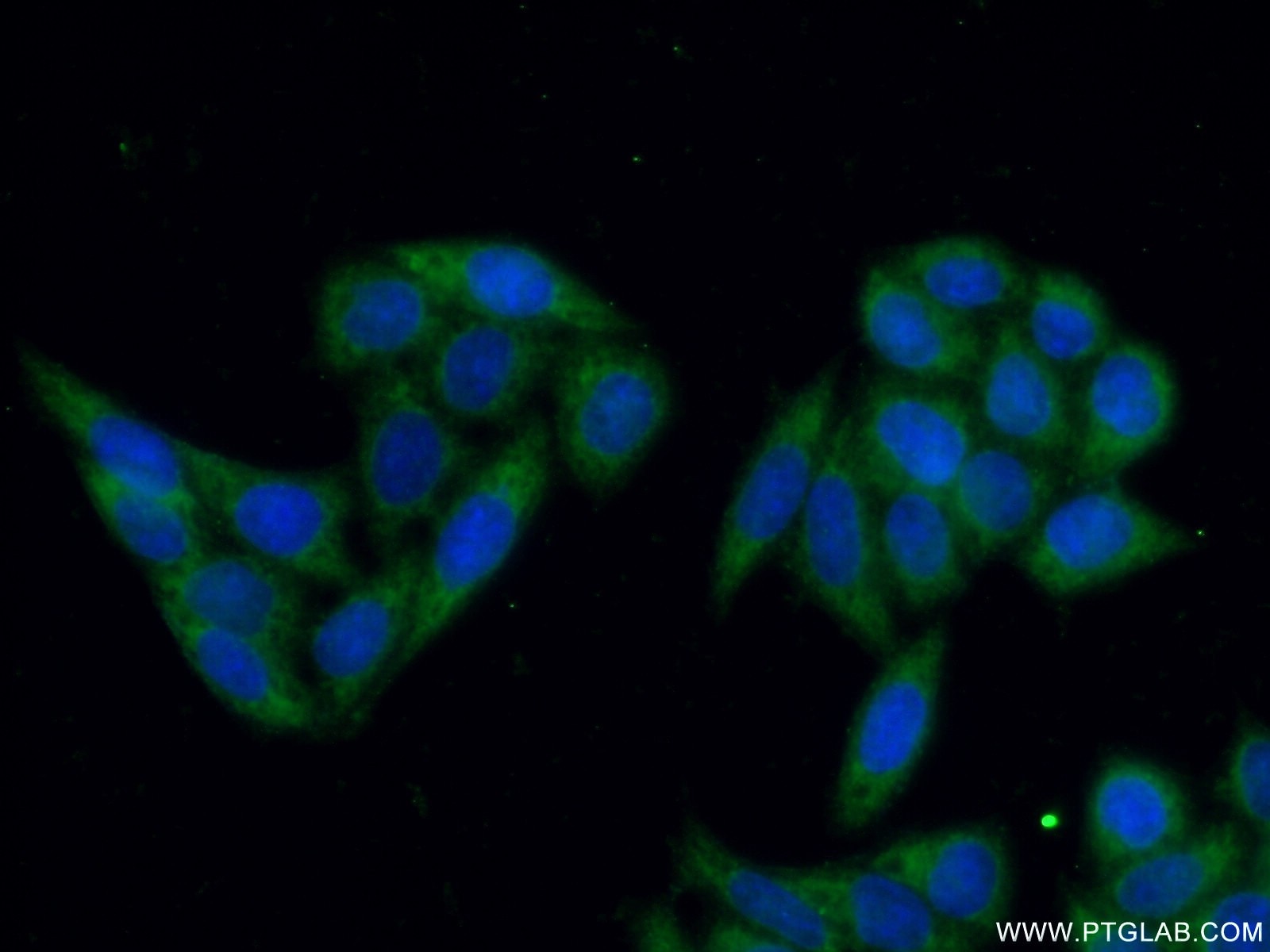- Featured Product
- KD/KO Validated
STS Polyklonaler Antikörper
STS Polyklonal Antikörper für WB, IHC, IF/ICC, ELISA
Wirt / Isotyp
Kaninchen / IgG
Getestete Reaktivität
human, Maus, Ratte
Anwendung
WB, IHC, IF/ICC, ELISA
Konjugation
Unkonjugiert
Kat-Nr. : 17870-1-AP
Synonyme
Geprüfte Anwendungen
| Erfolgreiche Detektion in WB | MCF7 cells, humanes Plazenta-Gewebe |
| Erfolgreiche Detektion in IHC | humanes Plazenta-Gewebe, humanes Uterusmyomgewebe, humanes Nierengewebe, humanes Lungengewebe, humanes Eierstockgewebe, humanes Hautgewebe Hinweis: Antigendemaskierung mit TE-Puffer pH 9,0 empfohlen. (*) Wahlweise kann die Antigendemaskierung auch mit Citratpuffer pH 6,0 erfolgen. |
| Erfolgreiche Detektion in IF/ICC | HeLa-Zellen |
Empfohlene Verdünnung
| Anwendung | Verdünnung |
|---|---|
| Western Blot (WB) | WB : 1:500-1:2000 |
| Immunhistochemie (IHC) | IHC : 1:20-1:200 |
| Immunfluoreszenz (IF)/ICC | IF/ICC : 1:50-1:500 |
| It is recommended that this reagent should be titrated in each testing system to obtain optimal results. | |
| Sample-dependent, check data in validation data gallery | |
Veröffentlichte Anwendungen
| KD/KO | See 1 publications below |
| WB | See 4 publications below |
| IF | See 2 publications below |
Produktinformation
17870-1-AP bindet in WB, IHC, IF/ICC, ELISA STS und zeigt Reaktivität mit human, Maus, Ratten
| Getestete Reaktivität | human, Maus, Ratte |
| In Publikationen genannte Reaktivität | human, Maus, Ratte |
| Wirt / Isotyp | Kaninchen / IgG |
| Klonalität | Polyklonal |
| Typ | Antikörper |
| Immunogen | STS fusion protein Ag12353 |
| Vollständiger Name | steroid sulfatase (microsomal), isozyme S |
| Berechnetes Molekulargewicht | 583 aa, 65 kDa |
| Beobachtetes Molekulargewicht | 63-65 kDa |
| GenBank-Zugangsnummer | BC075030 |
| Gene symbol | STS |
| Gene ID (NCBI) | 412 |
| Konjugation | Unkonjugiert |
| Form | Liquid |
| Reinigungsmethode | Antigen-Affinitätsreinigung |
| Lagerungspuffer | PBS with 0.02% sodium azide and 50% glycerol |
| Lagerungsbedingungen | Bei -20°C lagern. Nach dem Versand ein Jahr lang stabil Aliquotieren ist bei -20oC Lagerung nicht notwendig. 20ul Größen enthalten 0,1% BSA. |
Hintergrundinformationen
STS(Steroid sulfatase) is also named as ASC(arylsulfatase C), ARSC1 and belongs to the sulfatase family. It is expressed in human liver and is responsible for the hydrolysis of many estrogen and hydroxysteroid sulfates, including dehydroepiandrosterone (DHEA)-sulfate and β-estradiol(E2)-3-sulfate(PMID:19589875). This enzyme has also been documented to occur in many other tissues, including skin, lung, ovary, and adrenal gland. The estimated molecular mass of expressed human STS is 63-85 kDa which may represent different levels of glycosylation in the different tissues, as STS is known to be a glycoprotein and the full length protein has a signal peptide with 21 amino acids(PMID:17604157).
Protokolle
| PRODUKTSPEZIFISCHE PROTOKOLLE | |
|---|---|
| WB protocol for STS antibody 17870-1-AP | Protokoll herunterladen |
| IHC protocol for STS antibody 17870-1-AP | Protokoll herunterladenl |
| IF protocol for STS antibody 17870-1-AP | Protokoll herunterladen |
| STANDARD-PROTOKOLLE | |
|---|---|
| Klicken Sie hier, um unsere Standardprotokolle anzuzeigen |
Publikationen
| Species | Application | Title |
|---|---|---|
Clin Cancer Res Steroid Sulfatase Stimulates Intracrine Androgen Synthesis and is a Therapeutic Target for Advanced Prostate Cancer.
| ||
Sci Rep Estrogen Secreted by Mesenchymal Stem Cells Necessarily Determines Their Feasibility of Therapeutical Application. | ||
Mol Cell Biochem Resveratrol and its methoxy derivatives modulate the expression of estrogen metabolism enzymes in breast epithelial cells by AhR down-regulation. | ||
J Biomed Res Suppressed estrogen supply via extra-ovarian progesterone receptor membrane component 1 in menopause. | ||
Life Sci Alliance Macrophage Sult2b1 promotes pathological neovascularization in age-related macular degeneration |
